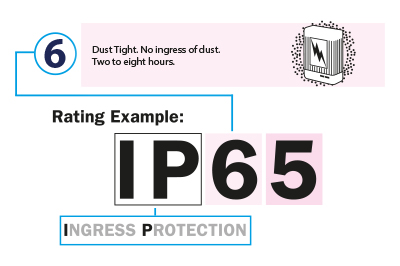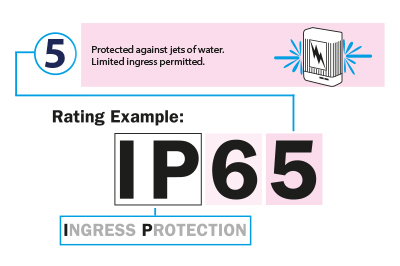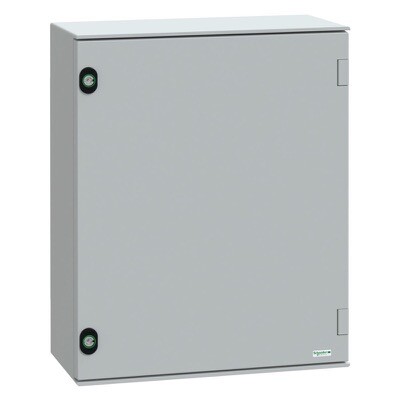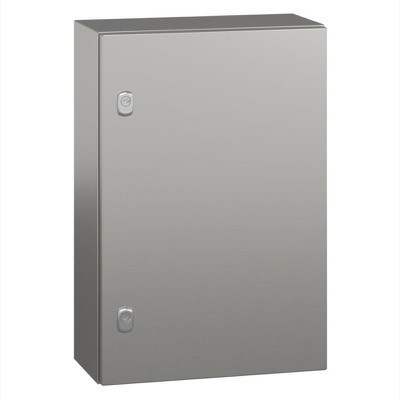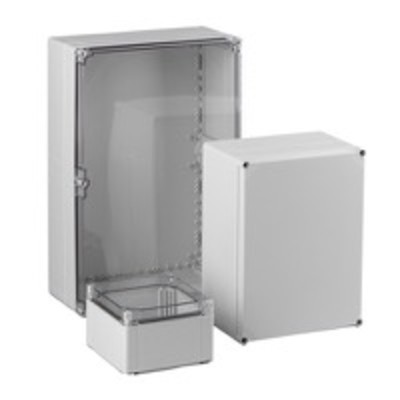An IP (Ingress Protection) rating is a unit used to define the levels of protection an electrical enclosure offers to any contents and assemblies housed inside. This is calculated by measuring the enclosure's sealing effectiveness from any moisture or foreign bodies (tools, dust, dirt etc).
To ensure your components are sufficiently protected, it’s important to understand what each digit relates to and what IP rating you require from an enclosure. Using IP65 as an example, the first digit ‘6’ is used to define the level of protection offered from solid objects & foreign bodies, whilst the second digit ‘5’ is used to measure the level of protection offered from liquid objects & moisture.
Find out more on the different levels of protection an electrical enclosure offers below or by checking out our handy IP ratings infographic:
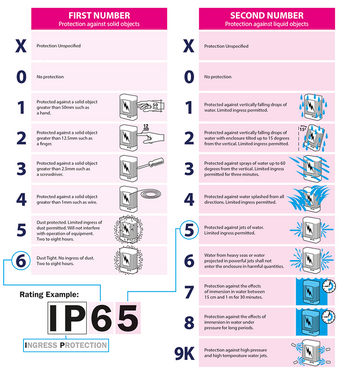
IP ratings are defined in international standard IEC 60529 (British BS EN 60529:1992, European IEC 60509:19889). Further information on IP rating standards (BS EN 60529:1992+A2:2013) is available to purchase from the British Standards Institute here.
Also interested in learning about impact protection? Check out our IK ratings page.
